08 May 2019
While often termed differently, muffin top, belly fat and spare tire are all essentially the same thing – excess abdominal fat. No matter what it’s called, it can be a frustration for many men. One of the most difficult areas to slim, the abdomen contains two types of fat which each require different tactics to tone the area. We asked Brent Wilson, a registered dietitian at INTEGRIS, Health to share his advice on how the spare tire affects men and what can be done to get rid of it once and for all.
Fat around the stomach and waist can be caused by a variety of factors. “The spare tire is excess body fat stored around the midsection when our calorie balance is off,” Wilson explains. Caused by an imbalance between calorie intake and output, poor diet and insufficient activity are the main culprits of belly fat.
Inactivity during the day, worsened by sitting at a desk or in front of the television for long periods of time, is also a large contributor to one’s spare tire. Even stress can be a factor as it can impact the hormones that create fat.
 Visceral Fat
Visceral Fat “Subcutaneous fat hibernates just beneath your skin and you can grasp it with your fingers,” Wilson says. “Visceral fat stows away deep in your abdomen around your organs.” These organs can include your intestines and stomach. Visceral fat is more dangerous than its subcutaneous counterpart as it can produce cytokines, or inflammation, that can damage those organs.
Health risks commonly go hand-in-hand with the spare tire. “Excess belly fat increases your risk for high blood pressure, cholesterol, triglycerides and metabolic syndrome,” Wilson explains. The chemicals created by excess visceral fat can increase the risk for heart disease or diabetes. As men age, it becomes more important to exercise regularly as their bodies tend to lose muscle mass more easily.
When it comes to shedding the spare tire, lifestyle changes must be made. “Ultimately, it comes down to the decisions we have to make on a daily basis,” Wilson says. He explains these decisions become increasingly more difficult to make due to the convenience of highly processed foods that include substantial amounts of fat, sugar and calories. Combined with the typical low level of activity required by many jobs, it becomes more important to make conscious decisions to be physically active.
He explains these decisions become increasingly more difficult to make due to the convenience of highly processed foods that include substantial amounts of fat, sugar and calories. Combined with the typical low level of activity required by many jobs, it becomes more important to make conscious decisions to be physically active.
The first step toward eliminating the spare tire is to set healthy and reasonable goals. Shedding abdominal fat takes time and should not be treated as a race. So, how do you track your progress? The number on the scale doesn’t always represent the amount of fat and muscle mass a person carries, making it a less than optimal choice for measurement. Many people prefer to track their Body Mass Index (BMI), although Wilson advises against this. Instead, he opts for a more specific source of measurement.
“The BMI will ultimately give you a general idea of where your weight should be; however, it can be misleading as it doesn’t take muscle mass into account,” he says. “The best thing would be to have your body fat percentage tested and retested after a few months of implementing physical activity and healthy eating.” The INTEGRIS Health Weight Loss Center provides several options for both surgical and non-surgical weight loss services, including seminars and assistance with nutrition.
“The best thing would be to have your body fat percentage tested and retested after a few months of implementing physical activity and healthy eating.” The INTEGRIS Health Weight Loss Center provides several options for both surgical and non-surgical weight loss services, including seminars and assistance with nutrition.
It is also important to set a healthy daily calorie goal. “Ultimately, we need to lower our calorie intake,” Wilson says. “I would encourage keeping a food log to identify where the most calories are coming from in your diet. Then, try replacing high calorie food and beverages with lower calorie options.” He suggests the app MyFitnessPal as a way to track your dietary choices.
When exercising to burn belly fat, it’s important to create a healthy mix of cardio and strength training. When targeting the spare tire, especially if you don’t go to the gym on a regular basis, you should start slowly. Wilson suggests beginning by walking or cycling and slowly increasing the duration and intensity of cardio.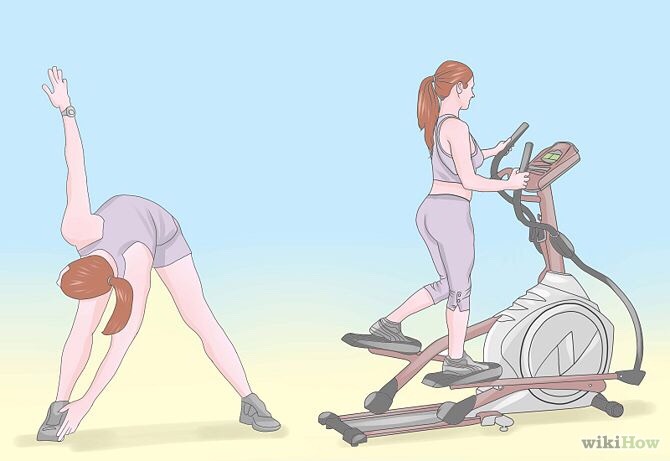 Make sure to include stretches in your routine to keep your muscles limber and limit soreness. He advises setting a goal of 150 minutes of physical activity per week.
Make sure to include stretches in your routine to keep your muscles limber and limit soreness. He advises setting a goal of 150 minutes of physical activity per week.
When it comes to choosing between cardio and weights, he says “both can be effective if used properly. The key is to get your heart pumping, so you can start burning the fat stored around the belly. Cardio is great at this. Weights can also work well, as long as you are keeping your heart rate elevated. Rather than resting in between sets of weight lifting, try using your rest time to keep your heart rate up with things like rowing, walking, or cycling.”
Stay committed to your exercise goals by creating a workout calendar or setting a joint fitness goal with your friends or family. For those who need to set a specific time to work out or thrive on extroverted activities, try joining a group fitness or boot camp style workout.
A healthy diet is the perfect complement to your new exercise regime. It can also be the most difficult part of the process. Essentially, it’s important to choose lower calorie options, skip processed foods, limit sugar and practice portion control.
It can also be the most difficult part of the process. Essentially, it’s important to choose lower calorie options, skip processed foods, limit sugar and practice portion control.
“Choose lean protein sources such as eggs, nuts, fish and chicken,” Wilson recommends. “Increase your intake of fruit and vegetables, which contain fewer calories per cup than most other foods. The fiber in them will keep you feeling full for longer so you take in fewer calories throughout the day.”
It is vital that men strive to achieve a healthy lifestyle as they age. Eliminating the spare tire is a crucial factor in the process of lowering health risks and staying in good physical shape. Contact an INTEGRIS Health physician today to assess your health needs.
Share this page
There’s no way to specifically lose weight in a particular area, however, by watching what you eat and staying consistent with your workouts, you can develop a healthier body.
Image Credit: Carlina Teteris/Moment/GettyImages
Getting rid of your spare tire tummy can not only help your clothes fit better, it can also be great for your health! While you can't spot tone, the best overall approach to a healthier body is to focus on the tried and true approach: healthy diet and consistent exercise.
Video of the Day
There’s no way to specifically lose weight in a particular area, however, by watching what you eat and staying consistent with your workouts, you can develop a healthier body.
While the slang term is a spare tire belly, this colloquialism refers to a buildup of fat and excess weight around your abdomen. According to Mayo Clinic, this issue is most common as we get older. This is because we slowly lose muscle mass as we age, which decreases the number of calories we burn throughout the day. At the same time, the amount of fat increases, making it more difficult to maintain a proper weight.
Unfortunately, developing a middle-aged spare tire is more commonly seen in women than men. This occurs as a result of menopause, which causes a decrease in the hormone estrogen as women enter the middle of their lives. This hormonal fluctuation seems to cause the distribution of fat in the body to shift, with much more of it centering in the abdomen.
There may also be a familial link to developing a spare tire tummy. Mayo Clinic also reports that your body type and fat distribution, specifically whether it is more apple shaped or pear shaped, seems to be related to your individual genetic history.
While a spare tire tummy be seem like simply a cosmetic complaint, the truth is an increase in abdominal fat can have significant health effects. As reported by Harvard Health, this is because abdominal fat is visceral in nature.
Unlike subcutaneous (just beneath the skin) fat which can be easily grabbed and pinched, visceral fat is situated deeper within the abdomen and can be seen or measured, but not grabbed. This type of fat fills the areas between our internal organs in your stomach.
This type of fat fills the areas between our internal organs in your stomach.
The visceral type of fat can cause significant issues like cardiovascular disease and Type 2 diabetes. It can also impact your overall metabolism and slow down the rate at which you burn calories. In addition, Harvard Health states that there is some association between increased abdominal fat and a higher risk of breast cancer in females. To add to this, women with a spare tire may also experience an increased rate of gallbladder surgery.
While it may not be particularly exciting, watching what you eat is a tried and true way to reduce your overall weight and get rid of a middle-aged spare tire. While every person's situation is unique, according to the Cleveland Clinic, the ketogenic diet seems to work particularly well for individuals who are trying to reduce the amount they weigh.
This diet focuses on restricting the overall amount of carbohydrates you consume. At the same time, it strives to increase your overall protein intake. As a result of these caloric changes, individuals seem to drop pounds even with only a moderate amount of exercise.
At the same time, it strives to increase your overall protein intake. As a result of these caloric changes, individuals seem to drop pounds even with only a moderate amount of exercise.
Read more: How to Shrink Belly Fat Fast
Because the specific recommendations are unique from person to person, it is best to work with your doctor when developing a weight loss program. Not only will they be able to provide you with specifics, but they can also help you keep the weight off after you put in all the hard work to lose it.
In addition to cutting calories, regularly hitting the gym or working out at home is another crucial part of reducing your spare tire belly. Weight loss is all about tipping the scales between the number of calories you consume through your diet and the amount you burn off with activities and exercise throughout the day.
Read more: Does Rowing Burn Belly Fat
According to the Department of Health and Human Services, the average adult should strive to get at least 150 minutes of moderate aerobic activity each week. This could include things like brisk walking or outdoor biking.
This could include things like brisk walking or outdoor biking.
You may also choose to do more vigorous exercises like running, swimming or using a stair stepper for a shorter duration (75 minutes per week). Organized sports like pick-up basketball or gym fitness classes such as step aerobics or Zumba may also fit into this category. Try finding an exercise buddy or an accountability partner to keep your workouts consistent and to maximize your chances of success.
Many different types of exercise can help reduce the size of your middle aged spare tire, and it is important to pick one that you like in order to stay consistent. That said, some types of workouts may be more beneficial than others. According to a February 2018 meta-analysis published in Sports Medicine, incorporating high-intensity interval training (HIIT) workouts into your exercise routine has been shown to effectively target visceral fat deposits in the abdominal area.
Read more: Do Crunches Reduce Belly Fat?
This type of workout mixes shorter periods of high-intensity movements or exercise with longer increments of lower intensity activities or complete rest. The journal found that HIIT-style running is more effective than biking at decreasing deposits of visceral abdominal fat in both normal weight and overweight individuals.
AARP recommends that beginners start by taking their normal cardio exercise and increasing the intensity high enough for you to become too winded to speak. Aim to do this for 20 seconds and then slow the pace down to your normal speed for 1 to 2 minutes. Next, return to the high intensity speed for another 20 seconds, rest for 2 minutes and then try to complete 20 more seconds at the faster pace. Finally, cool down at your normal speed for 2 more minutes.
Should your spare tire belly not diminish in size with the strategies listed above, you may want to contact your doctor to speak to them about further treatment options.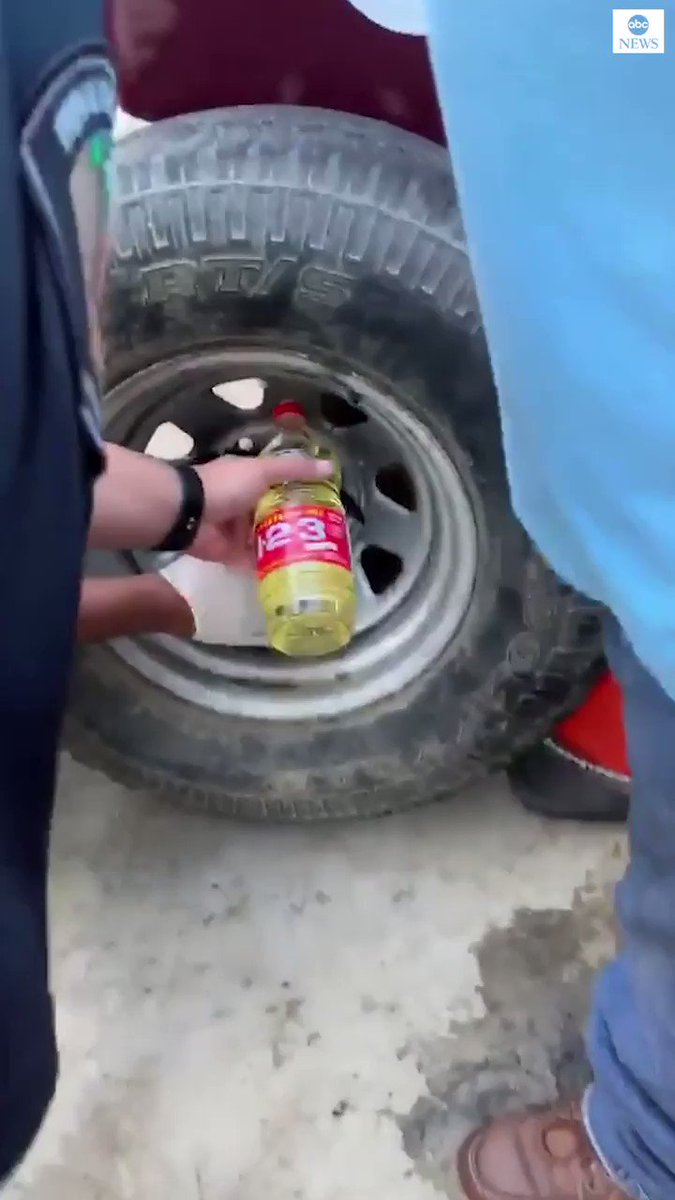 Initially, your physician may recommend a consultation with a nutritionist or personal trainer to give you more specific guidance on your diet and exercise regimen.
Initially, your physician may recommend a consultation with a nutritionist or personal trainer to give you more specific guidance on your diet and exercise regimen.
They may also want to take a closer look at any other health conditions you may have, some of which can affect your ability to lose weight. These can include having diabetes or having a thyroid issue. In some instances, they may even recommend prescription medication to assist in the fat burning process.
More extreme cases may even warrant bariatric surgery, which alters the amount of food that your stomach can contain or changes the way that nutrients are absorbed by the stomach in an effort to stimulate weight loss. Your doctor can give you proper guidance on which of these, if any, is right for you.
Probably everyone would agree that modern cars have evolved rapidly over the past ten years. This applies to all key performance indicators such as safety, speed or comfort. At the same time, there was practically no direct connection with models from the “zero” ones - the aggregate and component base took a step forward.
At the same time, there was practically no direct connection with models from the “zero” ones - the aggregate and component base took a step forward.
If we analyze the results of crash tests of modern cars according to the EuroNCAP methodology, which gradually tightens the requirements, then positive dynamics will be clearly traced. The same can be said about the dynamic performance of current models. For example, a charged front-wheel drive hatchback from 2017 may well give odds to an all-wheel drive sports car from a decade ago on the Nürburgring race track. Could you imagine this? The Volkswagen Golf GTI Clubsport S far outperforms the Porsche 9 on one of the toughest racetracks in the world.11 GT3 RS (997) or Mercedes-Benz SL 65 AMG Black Series, 670 hp
At one time, options such as dual-zone climate control and heated seats in the fifth generation Volkswagen Golf seemed to be the height of the possible equipment. Now in the same Volkswagen Golf, but already the seventh generation, you can answer the call with a wave of your hand, like a slightly annoyed orchestra conductor. Unfortunately, progress sometimes comes at a cost, and one of the biggest downsides to massive speed, safety, and comfort improvements is that much of the devices and components that contribute to it reduce interior space.
Unfortunately, progress sometimes comes at a cost, and one of the biggest downsides to massive speed, safety, and comfort improvements is that much of the devices and components that contribute to it reduce interior space.
In order to ensure the increased dynamics, a lot of new components and assemblies were required, which take up space in the engine compartment. The turbocharger, with its fairly compact dimensions, needs a pipe system, as well as an intercooler, which makes the design noticeably more massive. This does not cause inconvenience as long as everything can be placed under the hood.
"As long as I have enough room for passengers and their luggage, I'm willing to compromise" , you say. In part, you will be right, but attempts to improve aerodynamics due to the flat bottom of the car or the rear diffuser significantly affect the volume of the trunk. The same applies to the limited slip differential in the rear axle.
“Okay, but what if I don't need a sports car, but just a vehicle for my family and to transport things? Just a comfortable and safe car?” . In order to meet such requirements, automakers used the design method of creating safety cells and crumple zones, which also negatively affects the volume of the passenger compartment and trunk.
In order to meet such requirements, automakers used the design method of creating safety cells and crumple zones, which also negatively affects the volume of the passenger compartment and trunk.
If we continue talking about comfort, then modern business class cars can offer the owner and passengers an audio system with high-quality sound that is not inferior to professional studio devices. For this, multi-channel systems with tweeters and bass speakers are used, requiring a certain amount of space for installation and normal operation.
If you need a car that can smooth out all the bumps in the road, then electronically controlled air suspension is at your service. However, it should be understood that such mechanisms do not have compact versions. For example, you cannot order an all-wheel drive Mercedes S-Class Coupé with Active Stability Control. You can be offered either 4Matic AWD all-wheel drive, or this system, but already in a car with rear-wheel drive. All this is due to the lack of internal space for the simultaneous placement of all mechanisms.
All this is due to the lack of internal space for the simultaneous placement of all mechanisms.
All of the above is quite understandable, but we have not yet come to the most important aspects of the matter.
So, we found out that modern cars have come a long way in evolution over the past ten years. But there is a mechanism that turned out to be practically timeless - this is the wheel. If it has a hole or depressurizes due to hitting a bump in the road, the problem must be fixed immediately, no matter where you are. And this is perhaps one of the biggest annoyances for motorists traveling in unfamiliar lands.
Of course, the problem is solved very simply - by changing the wheel, which even a beginner can handle, “So what is the essence of the complaints?” - you ask. The fact is that to replace a damaged wheel, you will need a spare. This is the main problem, which few people think about until they personally encounter it, because the previously integral spare wheel has already become a victim of the lack of internal space.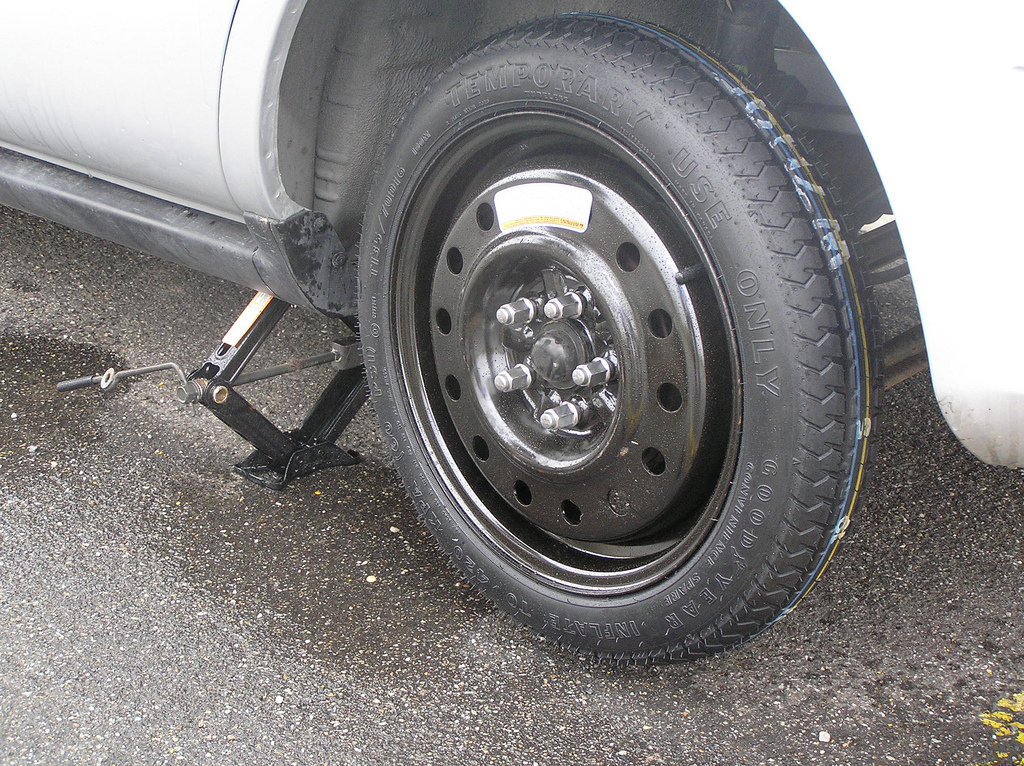
The spare wheel has three properties - it increases the curb weight of the car, it takes up interior space, but at the same time it is extremely convenient in case of an unforeseen situation. Unfortunately, the first two properties, which are disadvantages, prevail over the last - an undeniable advantage. As a compromise, motorists were offered the so-called "docks" - reduced in width versions of the spare wheel, much lighter and more compact.
Some manufacturers of expensive models have equipped them with run-flat tires that allow you to move even with a flat tire. While budget models are equipped with a set of sealants that allow you to temporarily repair a small puncture along the way, moreover, recently even these tubes have ceased to be included in the mandatory set of equipment.
The main problem with all these spare wheel alternatives is that they cannot provide a complete replacement. No matter how many miles you drive on a flat tire, even with a run-flat tire installed, you will ruin it.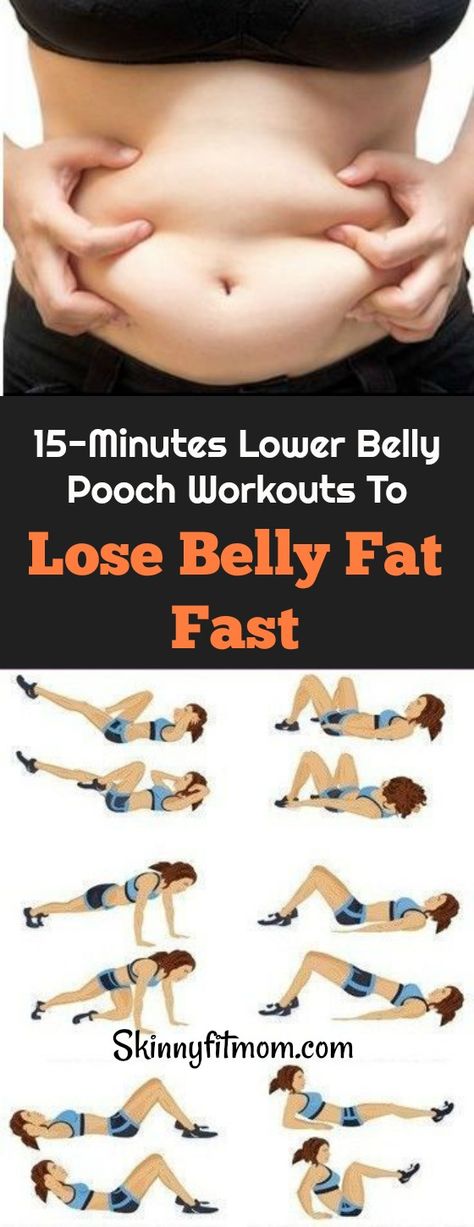 As soon as you get to the nearest tire shop, you will be offered an immediate replacement with a new one.
As soon as you get to the nearest tire shop, you will be offered an immediate replacement with a new one.
See also: Off-road driving – everything to consider
In addition, in the event of a side cut, despite all the manufacturability, it is impossible to ride on such a wheel.
The same can be said for the aforementioned sealing kits, which can only be used to seal small punctures. If the tire was torn, then nothing but a full-fledged spare tire will help you.
Among the best long-distance cars you can buy today, there are none that have the option of a folding spare wheel, and we are talking about the Porsche Panamera Sport Turismo or the Mercedes-AMG E63 S, and others. similar models. It is clear that the need for efficient brake discs makes it necessary to increase the diameter of the wheel, as a result of which the spare wheel can reach an impressive size and occupy almost the entire internal volume of the trunk.
A 2015 study in the US, where this problem is actually less common than in Europe, found that at least 36% of all new cars sold do not have a spare tire. Only 5% of cars had a similar defect in 2006. With that said, we are now in favor of resurrecting the full-size spare and hope that many of you will start doing the same, otherwise we face the very unpleasant prospect of being completely without a spare.
Only 5% of cars had a similar defect in 2006. With that said, we are now in favor of resurrecting the full-size spare and hope that many of you will start doing the same, otherwise we face the very unpleasant prospect of being completely without a spare.
Author: Sergey Vasilenkov
Author: Aleksey Kokorin
Experienced drivers are not surprised by such a trifle as a puncture, but for the first time beginners usually get confused in the sequence of actions, forget about important details and do not know what to do with a punctured wheel even in a tire shop - especially if they start offering choose from several options or intimidate with expensive repairs. Let's set up an operation algorithm when a flat tire is detected and figure out what to do right away and what to choose later.
Let's set up an operation algorithm when a flat tire is detected and figure out what to do right away and what to choose later.
What to do when you find a puncture
Having found a flat tire, first of all, you need to stop in a safe place, turn on the emergency alarm, assess visibility and, if necessary, set an emergency stop sign: according to traffic rules, it is installed at least 15 meters from the car in built-up area and at least 30 meters outside the built-up area. When choosing where to stop, consider the space to the side of the vehicle to handle a flat tire. You should not stop right on the road and in places where stopping and parking are prohibited: even if a punctured wheel belongs to the conditions of a forced stop, it is quite possible to drive several tens of meters on it to choose a safe and convenient parking place. At night or in conditions of limited visibility (for example, in fog or rain), it is imperative to wear a vest with retroreflective elements - this is required by clause 2.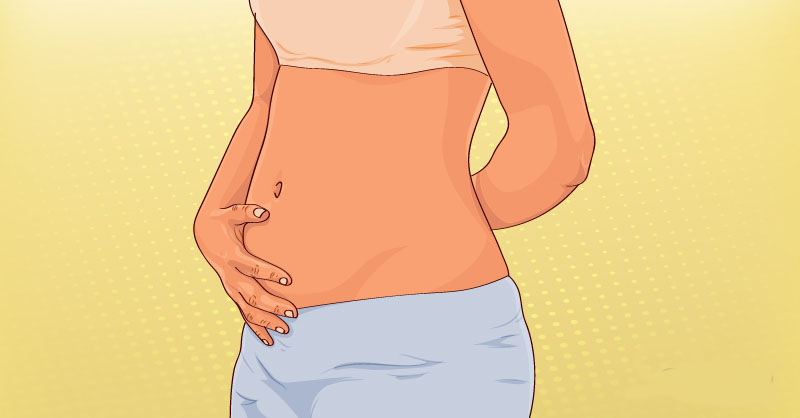 3.4 of the SDA and common sense.
3.4 of the SDA and common sense.
Now you can start working on the wheel. We will sequentially consider several options for action, and then move on to ways to repair a damaged tire.
The most obvious solution to a flat tire is to replace it. If you have a spare tire that you are sure is in good condition, the best option is to install it and visit a tire shop to repair a punctured tire - such repairs will be more reliable and of high quality than doing it yourself.
If you do not have a suitable spare tire, but you do have a pump or compressor, you can assess the damage to the tire and try to pump it up again to get to the tire shop. It is better to start searching for an air leak with a valve (aka “nipple” or “nipple”): often a faulty spool becomes the cause of a flat tire. It is easy to check it: unscrew the protective cap (if there is one), pour water on it (or slobber it, as in childhood): air bubbles will leak. In this case, you can try to replace the spool valve by unscrewing it and screwing in a new one, but if there is no new valve, as well as a store nearby, you can try just unscrewing and screwing it back in. Regardless of whether it helped or not, you need to visit a tire shop to replace the entire spool or valve.
Regardless of whether it helped or not, you need to visit a tire shop to replace the entire spool or valve.
If the valve is tight and the tire is flat, it is most likely a puncture. The easiest way to find a puncture that is free of foreign objects is to pour water on the tire while looking at the surface: the damage will reveal itself as air bubbles. However, often the cause of the puncture can be found along with it: a self-tapping screw, nail or other arbitrary object sticking out of the wheel will clearly indicate the place of depressurization. In this case, you do not need to immediately remove the foreign object from the tire: it partially seals the hole, and if the pressure loss is slow, you can try to pump up the wheel and drive to the tire shop.
The same goes for wheels that are leaking from the rim or from a faulty valve. Usually, in this case, the air is bled slowly, and you can pump up the wheel and have time to get to the place of repair. By the way, rim leakage can occur due to disk deformation upon impact - for example, when hitting a pit with sharp edges. Such situations are fraught with damage to both the disk and the sidewall of the tire, in which case the disk will need to be corrected, and the tire repaired or even replaced. To avoid rim leaks, you need to inspect the rims every time you change tires. The loss of tightness occurs either due to corrosion or due to disc deformation, and not only steel, but also light alloy wheels can corrode. So if you see paint blistering or rust on the rim, the tires need to be put on rim sealant: when changing tires, this will be cheaper than the subsequent removal and re-tire to fix a leak on the rim.
Such situations are fraught with damage to both the disk and the sidewall of the tire, in which case the disk will need to be corrected, and the tire repaired or even replaced. To avoid rim leaks, you need to inspect the rims every time you change tires. The loss of tightness occurs either due to corrosion or due to disc deformation, and not only steel, but also light alloy wheels can corrode. So if you see paint blistering or rust on the rim, the tires need to be put on rim sealant: when changing tires, this will be cheaper than the subsequent removal and re-tire to fix a leak on the rim.
If you find a puncture, but there are no foreign objects in it, and you do not have a spare wheel and tire repair kits, there is another popular method of temporary "repair". You can screw a self-tapping screw into the found hole - if, of course, you have one. In extreme cases, you can look for a self-tapping screw in the cabin by unscrewing it from some interior detail. This method cannot be called reliable: it is unlikely to ensure complete tightness of the wheel, but at least it can help you get to the nearest tire shop.
And a couple more useful remarks. If the wheel is completely flat, then it is easier to inflate it without a spool: the latter must be unscrewed, then the tire must be inflated and quickly screwed back in. The fact is that the spool itself, when inflated, resists the compressor, and in the event of a loose fit of a flat tire to the disk, the power of a simple magazine compressor may not be enough, and the absence of a spool helps to increase air flow and facilitate the operation of the compressor. If this does not help, you can jack up the car by hanging a flat tire: this will improve the fit of the tire to the disk, and the chances of inflating the tire will increase.
On-Site Repair Methods
Now let's look at options for repairing a tire yourself using special materials that you should carry with you or, if a puncture caught you in the city, buy it at the nearest auto shop.
1. The most common, cheapest and easiest way to do it yourself is to install a raw rubber band. The harnesses are sold complete with an abrasive awl to expand the hole in the tire and improve the contact of the repair harness with its edges, as well as a needle for installing the harness and an adhesive to fix it and at the same time seal the puncture. When choosing a repair kit in a store, you should pay attention to the following nuances:
The harnesses are sold complete with an abrasive awl to expand the hole in the tire and improve the contact of the repair harness with its edges, as well as a needle for installing the harness and an adhesive to fix it and at the same time seal the puncture. When choosing a repair kit in a store, you should pay attention to the following nuances:
Install the harness in the following order. First, the found hole is expanded with an abrasive awl - you need to insert and remove it several times into the puncture site. Then the tourniquet is inserted into the eye of the needle, and glue is applied to it. After that, the needle with the tourniquet must be inserted into the hole in the tire and pulled out sharply - so that the tourniquet remains in the hole, and the needle comes out without it. If everything worked out, it remains only to cut the end of the harness flush with the surface of the tire and pump up the wheel.
If everything worked out, it remains only to cut the end of the harness flush with the surface of the tire and pump up the wheel.
The advantages of repairing with a harness are quite decent reliability, simplicity and low cost. On a well-repaired tire, you can drive for a long time, and if the repair site starts to poison, you can either replace the harness or have the tire repaired in a quality service. Among the minuses is the possibility of damaging the cord during installation, as well as lower reliability compared to “full-fledged” repair methods in a tire shop. Strictly speaking, a tourniquet is still a temporary repair, so if it is possible to pump up a wheel and get to a tire fitting, then it is better not to enlarge the hole in the tire and get to the experts.
2. The second repair option is aerosol liquid sealants sold in cans. To repair a punctured tire with sealant, you need to remove the foreign object from the puncture site, then pour the sealant into the wheel through the valve, twist it to distribute the composition inside the tire, pump up the wheel and drive several kilometers at low speed for the final uniform distribution of the sealant.
Among the advantages of this repair is the simplicity and less labor intensity compared to installing the harness. However, there are also disadvantages: the larger the hole, the higher the chance that the sealant will not be able to eliminate it, and such a repair can affect the wheel balance. Compared to a tourniquet, it can be considered even less reliable and preferable, but simpler.
Repair options at a tire shop
If you have put on a spare tire and brought the wheel to a tire shop, you may also be offered several repair options. Consider the most popular with an indication of the advantages and disadvantages.
1. The first repair method is the same harness installation as described above. As we remember, the tourniquet refers to a temporary repair, so among tire specialists this method is considered bad form, but many workshops do not exclude it from the list of services. All the advantages and disadvantages are the same here: such a repair will be the fastest, simplest and cheapest, but less reliable than other methods.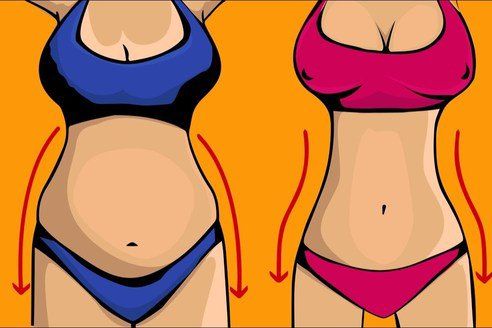 It is worth choosing it in cases where the price and / or speed of the procedure is more important to you than anything else. If quality is a priority, then it is better to fork out for the options listed below.
It is worth choosing it in cases where the price and / or speed of the procedure is more important to you than anything else. If quality is a priority, then it is better to fork out for the options listed below.
2. The second option for repairing a puncture is to install a patch on the inside of the tire, the so-called cold vulcanization. In this case, the tire is removed from the disk, the surface around the puncture is treated with an abrasive, and the damage is sealed with a special patch. This is a more preferred repair method than a tourniquet: it is more reliable and durable, especially in the case of side punctures, when not the thick tread part of the tire is damaged, but the thinner sidewall. Among the minuses, only a higher cost can be noted: in addition to the actual tire repair, you will have to pay for the removal and installation of the wheel (or do it yourself), tire fitting and balancing.
3. The third option is a "complex" of the first and second: installation of the so-called repair "fungus".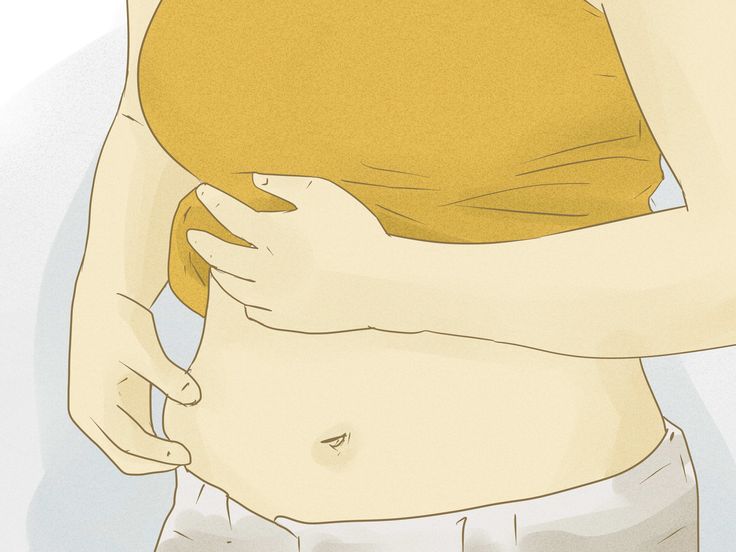 The “hat” of the fungus is a patch, and the “leg” is threaded from the inside of the tire to the outside. After gluing the patch, the excess part of the leg is cut off, as in the case of the tourniquet. Thus, not only the inner surface of the tire is closed, but also the hole itself. The advantages and disadvantages of this repair method are generally the same as those of a patch.
The “hat” of the fungus is a patch, and the “leg” is threaded from the inside of the tire to the outside. After gluing the patch, the excess part of the leg is cut off, as in the case of the tourniquet. Thus, not only the inner surface of the tire is closed, but also the hole itself. The advantages and disadvantages of this repair method are generally the same as those of a patch.
4. An extreme, “emergency” measure when repairing a punctured wheel is to install a camera in it. Typically, this method is used for tires that are no longer worth repairing, or “for reliability” after repairing a complex puncture. It should be understood that almost all modern tires are tubeless, that is, they are not designed to install a camera, so it’s not worth driving a wheel repaired in this way for a long time. Installing a tube is a temporary solution for riding until a new tire is purchased, and sometimes such wheels are left as spares. So this repair method can be kept in mind as a backup.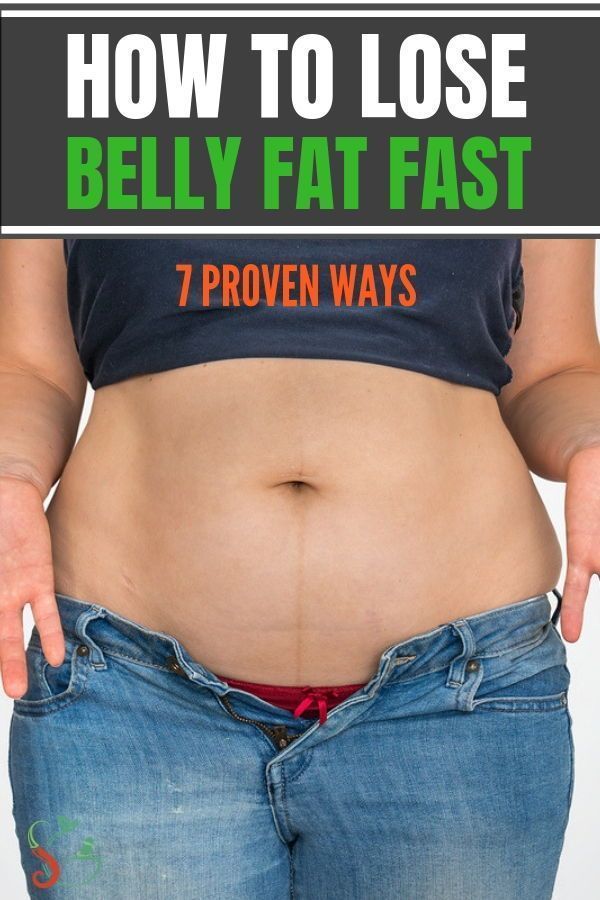
In conclusion
We have deliberately left out of the scope of this text such methods as combined repair of tires with a tourniquet and patch and hot vulcanization. The first is used quite rarely and for specific damage, and it is enough just to know about its existence. Well, the second is used to repair serious side cuts, and it is not only rare, but also very expensive. The cut site in this case is prepared, filled with raw rubber and processed with a hot press for vulcanization. Equipment for this procedure is not available in every tire shop, and the cost of repair can be about half the cost of a new tire.
interesting popular questions
Articles / Gadgets Rock and roll is alive! Retro style in modern auto gadgets The Kachok brand of automotive compressors, one of the oldest on the Russian market, has updated its design this 2022.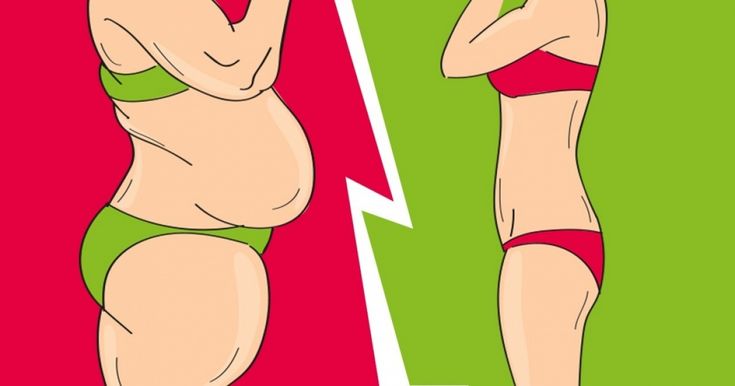 The rebranding is made in the old school style "a la the fifties and sixties ... 51 0 0 25.10.2022
The rebranding is made in the old school style "a la the fifties and sixties ... 51 0 0 25.10.2022
Articles / Popular questions Duplicate TCP: is it always bad and is it possible to buy a car with it The vehicle passport, or PTS, is the main document for a car. Checking it upon purchase and reconciling the data with those applied to the car is a mandatory procedure. But what is... 308 0 one 24.10.2022
Articles / Interesting 5 reasons to buy and not buy Geely Atlas Impressive and harmonious, solid and spectacular, very comfortable, but somewhat slow, not the most economical, but quite reliable .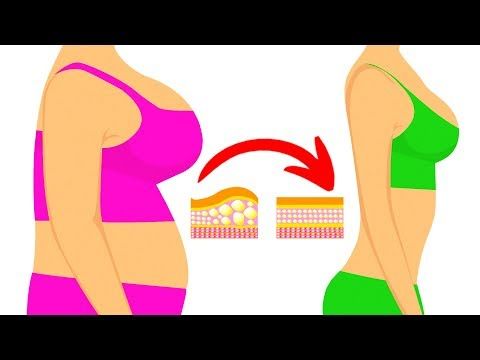 .. All this is Geely Atlas, a car, in its time ... 3110 3 0 23.10.2022
.. All this is Geely Atlas, a car, in its time ... 3110 3 0 23.10.2022
Test drives / Test drive Haval Dargo vs Mitsubishi Outlander: the dog is barking, the stranger is coming In the Haval dealership in the south of Moscow, life is in full swing: buyers look at cars, communicate with managers and sign some papers. While I was waiting for the test Dargo, the same cross... 14338 7 192 09/13/2022
Test drives / Test drive Motor from Mercedes, emblem from Renault, assembly from Dacia: test drive of the European Logan 1.